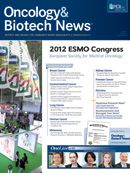Peering Deeper Into the Black Box
Over the past decade, there has been an explosion of knowledge regarding the fundamental drivers of the malignant phenotype.
Andrew L. Pecora, MD
Editor-in-Chief
Oncology & Biotech News
Chief Innovations Officer, Professor, and Vice President of Cancer Services John Theurer Cancer Center at Hackensack University Medical Center
It was not all that long ago when we administered agents capable of shrinking malignant growths without any real understanding of how or why they worked. Over the past decade, there has been an explosion of knowledge regarding the fundamental drivers of the malignant phenotype. Even more impressive has been the discovery of agents that effectively target the aberrant molecular pathways that cause certain cancers and strikingly, once targeted, cause disease regression and prolonged survival. Curiously, we are also learning that targeting aberrant pathways, while effective as a cancer therapy, may cause unintended toxicities and result in resistance to the particular therapy through a variety of mechanisms, some understood and some not.
Flaherty and colleagues recently illuminated the pathways that drive some cases of malignant melanoma and the consequence of targeting two versus one of these pathways (N Engl J Med. 2012;367:1694-1703). The mitogen-activated protein kinase (MAPK) pathway has been found to be a driver of the melanoma phenotype in approximately half of all patients diagnosed with melanoma. Blockage of MAPK signaling with targeted therapy has been shown to result in a high rate of tumor regression and prolongation of progression-free survival (PFS). Two agents, one that blocks BRAF signaling (used in patients with the BRAF V600E mutation) and the other (MEK) which acts downstream of BRAF, each have single agent activity in melanoma, but relative short durations of action (median PFS, 6-7 months). Preclinical models suggested that combining these two inhibitors might improve the rate of response, and possibly the duration of response. Another curiosity was observed in preclinical models using these agents. Single-agent blockage of BRAF can paradoxically activate MAPK and is thought to explain the clinical observation of development of cutaneous squamous cell cancers in patients receiving BRAF inhibitors.
Flaherty et al conducted an open-label study involving 247 patients with metastatic melanoma, all of whom had the BRAF V600E mutation. Patients were randomized to BRAF blockage alone (dabrafenib) or combined blockage of BRAF and MEK (dabrafenib + trametinib). The first major observation was that blockage of both pathways simultaneously did not increase toxicity other than pyrexia (71% with combined therapy versus 26% with singleagent BRAF blockage), and in fact reduced the incidence of cutaneous squamous cell cancer (7% vs 19%). As predicted by preclinical models, the combined therapy group had a significant improvement in PFS (9.4 months vs 5.8 months; hazard ratio = 0.39; P <.001) and significantly more responses (complete and partial: 76% versus 54%; P = .03).
We need to pause for a moment and consider what was just reported. We are now able to detect the drivers of cancer and target not one, but multiple sites of the pathways causing the malignant phenotype. Furthermore, we can now combine pathway targeting not only to modulate efficacy, but also to reduce toxicity. This was unimaginable up until a few years ago, and is now beyond wonderful for our patients.
We all have met and lost dear patients who died well before their time from this dreaded disease we call cancer and unfortunately this will continue for now, largely because cancer remains a black box. The work of Flaherty and others, however, is allowing us to peer ever deeper into the box, illuminating the path(s) to eradicate cancer for all.




